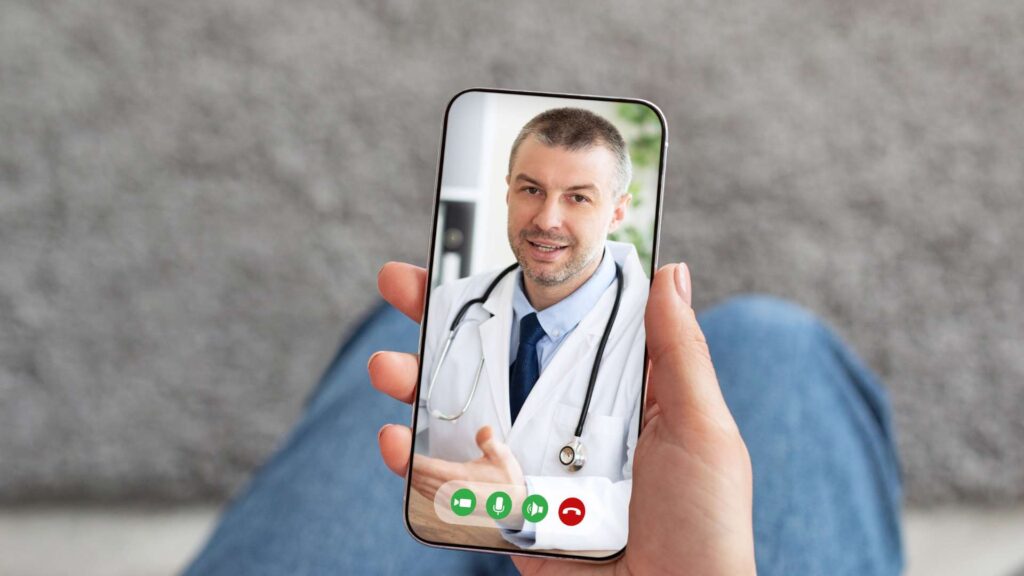Table of Contents
Virtual health has become the primary way for most individuals to stay in touch with doctors, specialists, and mental health professionals. Telehealth and online consultations have overcome geographical barriers, slashed wait times, and made healthcare more accessible.
Time can be at a premium during a virtual visit, and distractions can affect productivity. Learning how to advocate for yourself in a virtual healthcare setting is essential. To get the most from your session, you must be proactive, prepared, and articulate about what you need. Here’s what you need to know.
Challenges Unique to Virtual Visits
While virtual healthcare offers flexibility, it also comes with challenges that can make patient advocacy harder if you’re not ready for them.
1. Technology Issues
Poor internet connections, audio lag, or camera problems can interrupt your consultation. These interruptions can cause you to miss important details or feel rushed at the end. Even logging in or sharing test results can be stressful for patients unfamiliar with video conferencing tools.
2. Time Limits
Many virtual appointments are scheduled in tight blocks — sometimes just 10–15 minutes. Without preparation, you might not get to address all your concerns before the session ends.
3. Communication Barriers
In-person cues like eye contact, nodding, or a reassuring touch aren’t present online. You might not feel fully heard if your provider multitasks or looks at their notes.
4. Limited Scope
Specific physical examinations can’t be done virtually, so your provider relies heavily on how you describe symptoms. If you’re unclear or vague, important information could be missed.
How to Prepare: Questions, Records, and Clear Goals
Preparation is the most effective approach before a virtual consultation. Here’s what you need to do.
1. Write Down Your Questions in Advance
List your top three to five concerns in order of priority. This ensures you start with the most critical topics in case the session runs short.
2. Keep Records Handy
Have your recent lab results, medication list, allergy information, and any relevant history. Digital copies are ideal; email or upload them if your provider asks.
3. Define Your Goals for the Appointment
Be clear about what you want to achieve. For example:
- “I want to adjust my blood pressure medication because of side effects.”
- “I need a referral to a dermatologist.”
- “I’m looking for non-medication strategies to manage anxiety.”
4. Test Your Tech Beforehand
Check the speed of your internet connection, microphone, and camera. If your primary device fails, you should have a backup device, like your phone.
Speaking Up: Getting the Doctor’s Attention
You need to ensure you’re being heard and your needs are addressed.
Start Strong
Open the visit by summarizing your primary concern:
“I’ve prepared a short list of questions about my current treatment, and I’d like to focus on those today.”
Use Clear, Descriptive Language
Instead of saying “I feel tired,” try:
“For the past three weeks, I’ve been sleeping eight hours a night but still feel exhausted by noon.”
Ask for Clarification
If you don’t understand something, say: “Can you explain that in simpler terms?” or “What does that mean for my next steps?”
Summarize Before Ending
Repeat your understanding of the plan: “So, to confirm, I’ll take the new medication for two weeks and then book a follow-up blood test.”
This approach shows you’re engaged and ensures you and your provider are on the same page.
Tracking Your Health and Following Up
A single appointment doesn’t end your advocacy role — follow-up is just as necessary.
Take Notes During the Visit
Write down medication changes, lifestyle recommendations, and any dates for follow-up tests.

Create an Action Plan
Break down your provider’s recommendations into clear steps:
- Collect the prescription.
- Schedule a follow-up in two weeks.
- Start a daily walking routine.
Set Digital Reminders
You can use your phone, calendar apps, or Beem Health’s family care dashboard to set reminders for medication, check-ins, or symptom tracking.
Send a Summary Message
Send a quick summary using secure messaging if your platform facilitates such communication. Not only does this establish a written record, but it also verifies that you have understood the material.
Addressing Disagreements or Confusion
Even in a virtual setting, it’s okay to question or seek clarification about your care.
- Be Respectful but Direct
“I understand your recommendation, but I’m concerned about the side effects I’ve read about. Could we discuss alternatives?” - Request a Second Opinion
Many telehealth services — including Beem Health — allow you to easily book a different provider for a second opinion without starting from scratch. - Ask for Written Resources
If you’re unsure about instructions, request a patient handout, article, or video link to review afterward. - Escalate If Needed
If you feel dismissed or unsafe, use your platform’s escalation process to file a complaint or request another provider.
Tools and Resources for Virtual Advocacy
Digital tools can make self-advocacy easier and more organized.
- Beem Health’s Family Care Dashboards: These dashboards let you store medical histories, track appointments, manage prescriptions, and share information with multiple family members.
- In-Platform Chat Support: If a post-visit question arises, you can message your provider directly instead of waiting for your next appointment.
- Escalation Tools: Beem Health offers built-in escalation features to address urgent concerns or unresolved issues quickly.
Combining these tools with your preparation creates a smoother, more efficient healthcare experience.
How Everdraft Can Support You
Advocacy isn’t just about communication — sometimes it’s about having the resources to take action.
Everdraft gives you instant access to funds for:
- Booking additional consults if your issue isn’t resolved in one visit.
- Paying for a second opinion from a specialist.
- Covering emergency follow-up appointments or urgent lab tests.
Everdraft ensures that you can pursue the care you require without delay by removing any financial hesitations you may have.
Empowering Family Members
Virtual healthcare advocacy isn’t just for you — it’s a skill your entire family can benefit from.
For Kids
Teach them to describe their symptoms clearly (“My throat hurts when I swallow”) and encourage them to ask questions directly to the doctor.
For Seniors
Help them test devices before the appointment and prepare written notes if memory concerns them.
For Non-Tech-Savvy Relatives
Use platforms such as Beem Health, which offer streamlined login procedures and consultations with a click.
Conclusion
You must be aware, prepared, and attentive in a virtual healthcare setting. You can take an active role in your health by understanding the special challenges that digital visits present, preparing your questions and records in advance, communicating appropriately, and following up consistently.
Beem Health offers various tools that aid in virtual consultations with doctors. For any financial aid, you can check out Beem, a smart wallet app trusted by over 5 million Americans with features from cash advances to help with budgeting and tax calculations. In addition, Beem’s Everdraft™ lets you withdraw up to $1,000 instantly and with no checks. Download the app here.















































